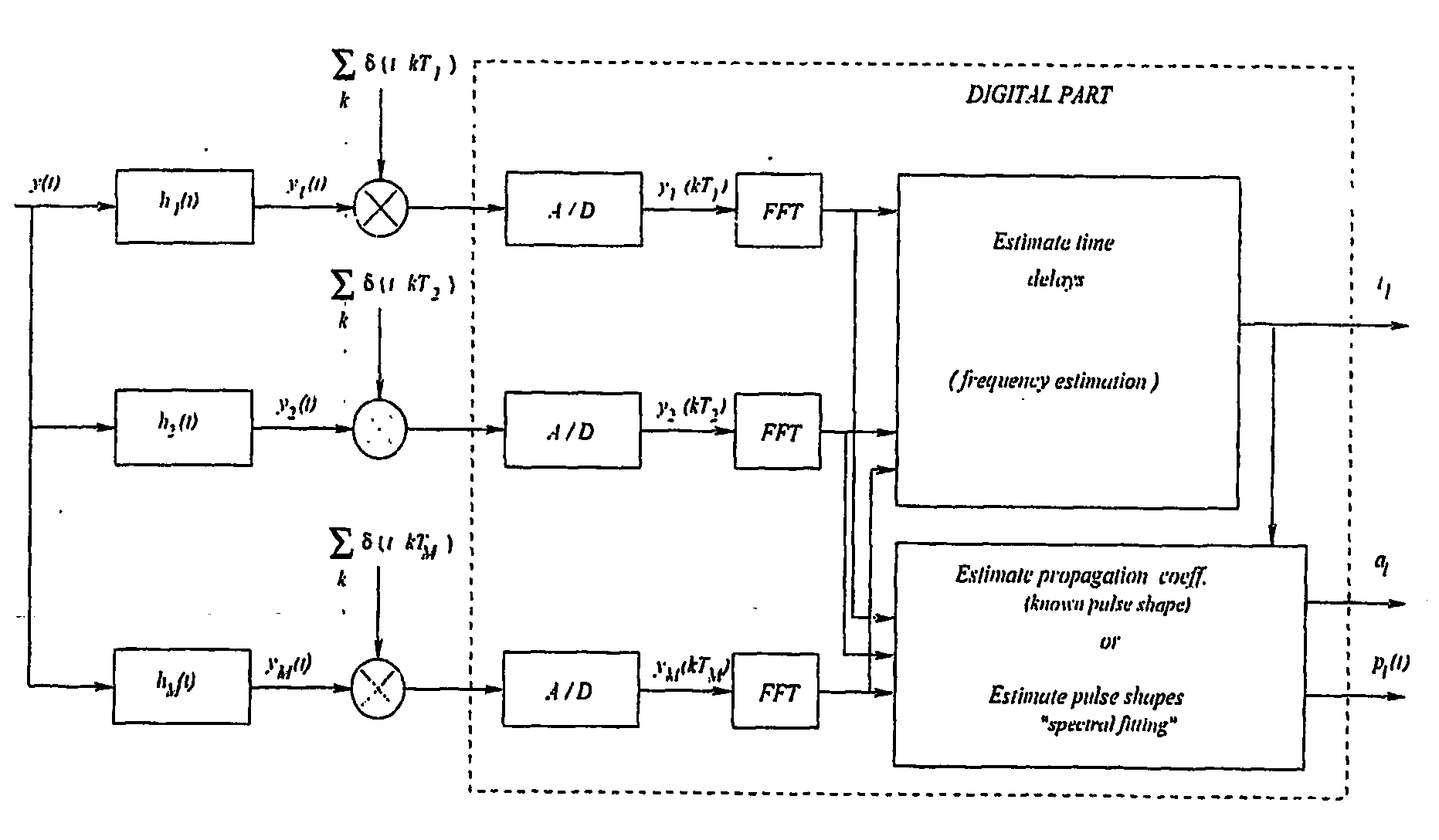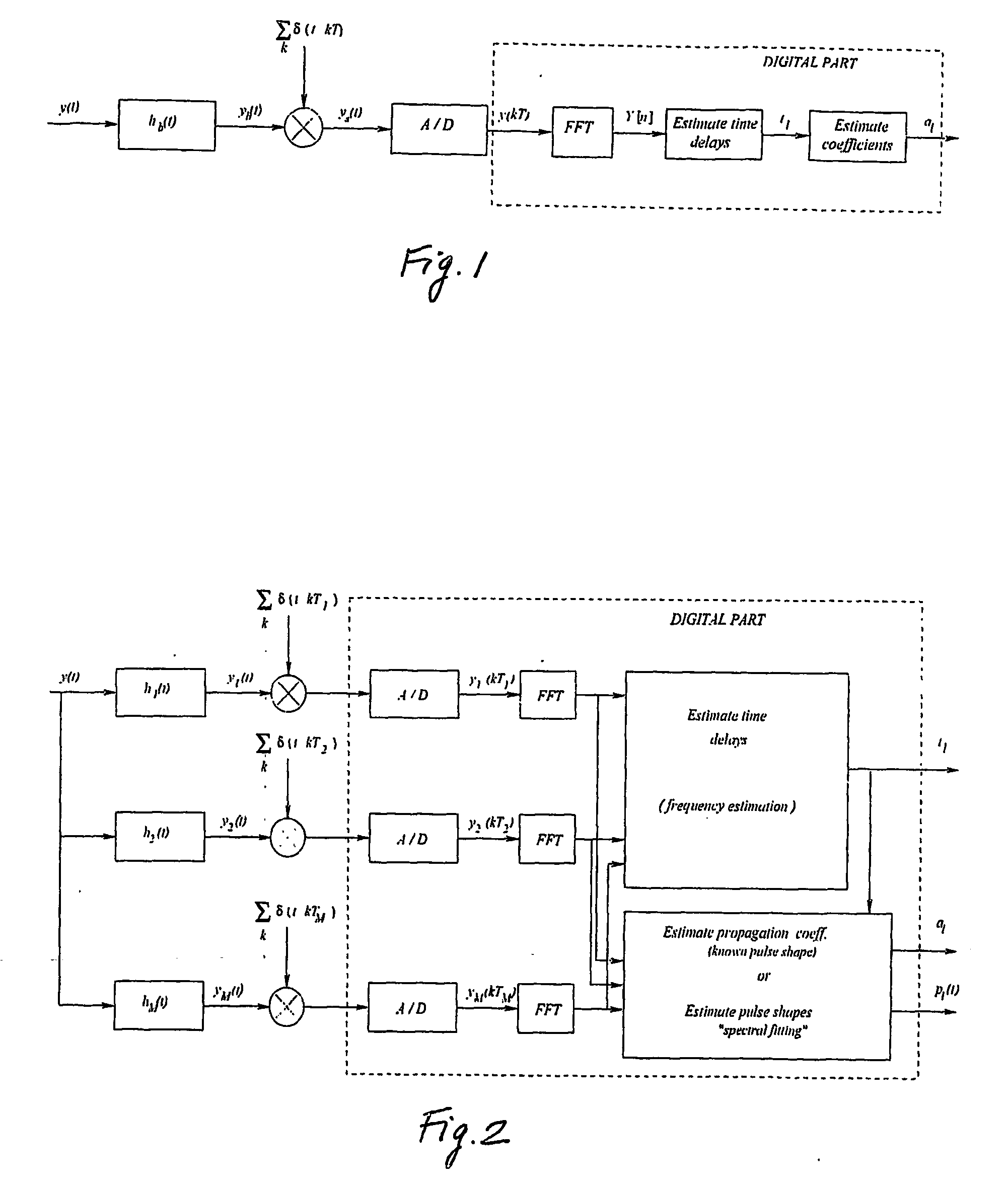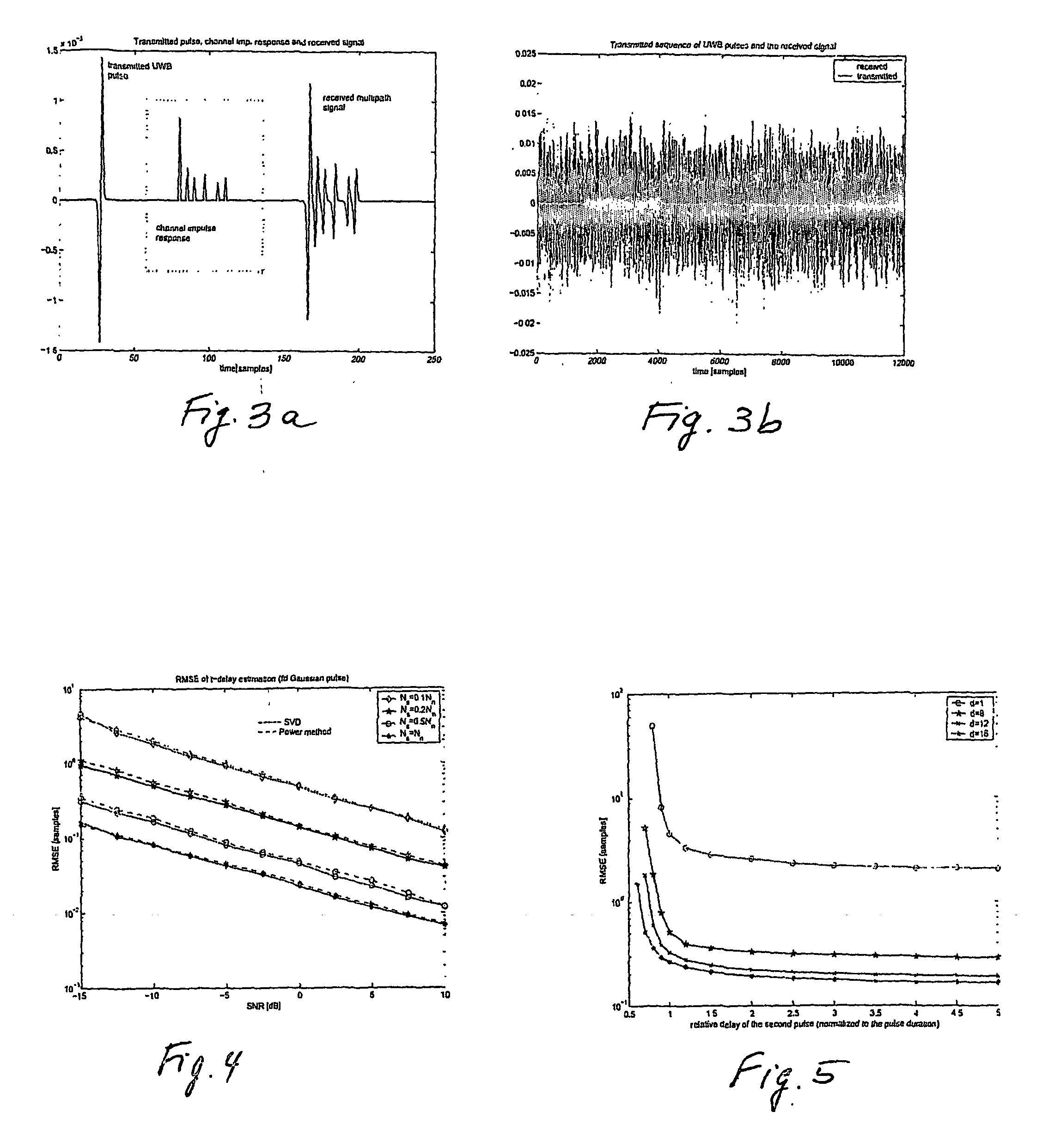Synchronization And Channel Estimation With Sub-Nyquist Sampling In Ultra-Wideband Communication Systems
a communication system and sub-nyquist technology, applied in the field of ultra-wideband communication systems, can solve the problems of prohibitively high power consumption and receiver complexity, difficult to analyze and practice reliable systems, and require very fast and expensive a/d converters, etc., to reduce complexity and power consumption, reduce sampling rate, and reduce receiver complexity
- Summary
- Abstract
- Description
- Claims
- Application Information
AI Technical Summary
Benefits of technology
Problems solved by technology
Method used
Image
Examples
Embodiment Construction
A. Channel Estimation at Low Sampling Rate
[0017] Propagation studies for ultra-wideband signals have taken into account temporal properties of a channel, or have characterized a spatio-temporal channel response. A typical model for the impulse response of a multi-path fading channel can be represented by h (t)=∑l=1Lalδ (t-tl)(1)
where tl denotes a signal delay along the l-th path and al is a complex propagation coefficient which includes a channel attenuation and a phase offset along the l-th path. Although this model does not adequately reflect specific bandwidth-dependent effects, it is commonly used for diversity reception schemes in conventional wideband receivers, e.g. so-called RAKE receivers. Equation (1) can be interpreted as saying that a received signal y(t) is made up of a weighted sum of attenuated and delayed replicas of a transmitted signal s(t), i.e. y (t)=∑l=1Lals (t-tl)+η (t)(2)
where η(t) denotes receiver noise. The received signal y(t) has only 2 L...
PUM
 Login to View More
Login to View More Abstract
Description
Claims
Application Information
 Login to View More
Login to View More - R&D
- Intellectual Property
- Life Sciences
- Materials
- Tech Scout
- Unparalleled Data Quality
- Higher Quality Content
- 60% Fewer Hallucinations
Browse by: Latest US Patents, China's latest patents, Technical Efficacy Thesaurus, Application Domain, Technology Topic, Popular Technical Reports.
© 2025 PatSnap. All rights reserved.Legal|Privacy policy|Modern Slavery Act Transparency Statement|Sitemap|About US| Contact US: help@patsnap.com



